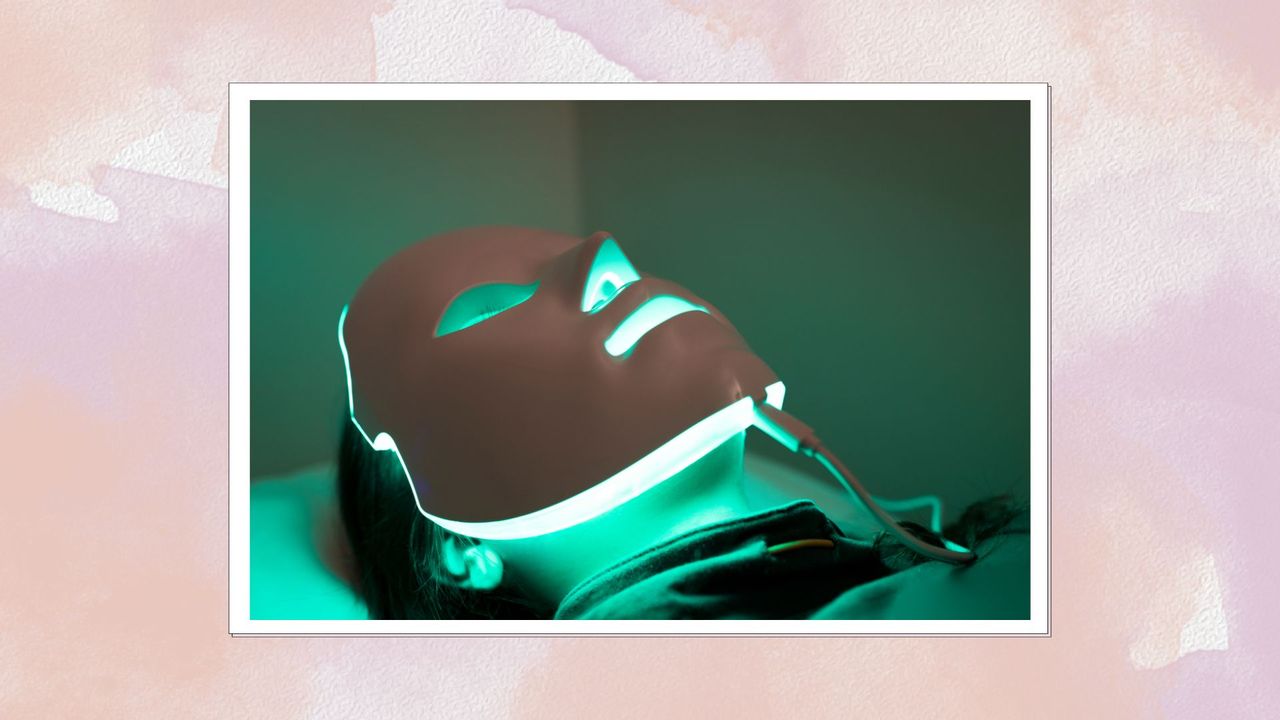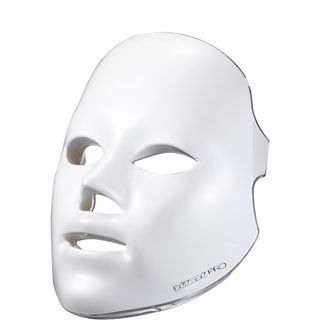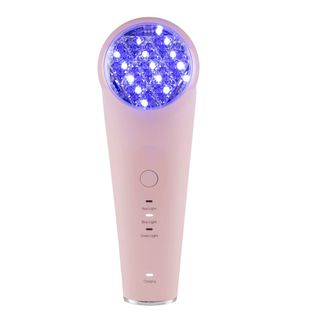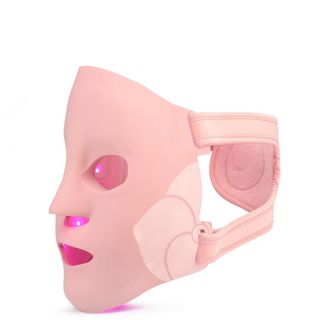Green light therapy vs red light therapy – which LED treatment is right for you?
The key differences between green light therapy vs red light therapy, according to dermatologists…


As sales of at-home LED light devices continue to rise, searches for "green light therapy vs red light therapy" are up on Google, too. Targeting different layers of the skin, these two wavelengths work in slightly different ways to deliver distinct results. While one is incredibly beneficial for photodamaged skin, the other is ideal for sensitive skin conditions.
If you’re into beauty tech, you’re likely familiar with the myriad red light therapy benefits. But what about green light therapy? Not as popular as its red light sister, green light is slowly starting to gain traction as more and more people become privy to its skincare benefits. Focusing on the surface of the skin, this light "mode" is said to help reduce redness and improve pigmentation (among other things).
Now a featured light setting in several of the best light therapy devices, users are keen to find out which one is right for them. Ahead, we share answers from the experts to break down the key differences between green light therapy vs red light therapy, including everything you should know before buying a light therapy device.
An expert guide to green light therapy vs red light therapy
How do green light and red light differ?
“Think of red light as the skin revitaliser, reaching deep into the dermis to stimulate collagen production, improve elasticity and repair cells,” says Dr. Derrick Phillips, consultant dermatologist. This wavelength, which is extremely popular among the celebrity circuit, is ideal for anyone looking to rejuvenate their skin from within.
“Green light, on the other hand, is the ‘calm’ wavelength, focusing on the skin's surface to soothe irritation, reduce redness, and even out pigmentation," Dr. Phillips continues. This means green light is perfect for anyone following a skincare routine for sensitive skin that needs gentle balancing.
What are the benefits of green light vs red light therapy?
“Red light therapy can be beneficial for overall skin health; it can support collagen production and help both calm and heal inflammation – ideal for conditions like acne and rosacea,” explains Dr. Hiba Injibar, consultant dermatologist and founder of the Dermasurge Clinic. “It's essentially a way to press ‘reset’ on stressed skin to restore a healthy glow and is a great non-invasive option for ageing skin to assist in overall skin quality.”
Meanwhile, “green light therapy is typically used to tackle pigmentation, such as the appearance of age spots or post-acne hyperpigmentation, by decreasing the production of melanin,” notes Dr. Maryam Zamani, oculoplastic surgeon and leading facial aesthetics doctor. She adds that green light can also help to reduce inflammation and redness and revitalise the skin around the eyes.
Sign up for the woman&home newsletter
Sign up to our free daily email for the latest royal and entertainment news, interesting opinion, expert advice on styling and beauty trends, and no-nonsense guides to the health and wellness questions you want answered.
Which skin types do green light and red light suit?
- "Red light therapy is gentle enough for most skin types, but it is especially beneficial for mature or photodamaged skin,” explains Dr. Phillips.
- Green light therapy is ideal for sensitive skin. “Its calming effect soothes redness without causing irritation, making it a great option for those with sensitive skin conditions like rosacea,” says Dr. Phillips.
Do green light and red light have any downsides?
According to Dr. Injibar, both therapies are typically safe and gentle. She does flag, however, that it’s wise to avoid overuse, which can cause mild irritation or dryness. “If you have reactive skin, start slowly, allowing your skin to adjust," she recommends. "And, because these treatments can heighten sun sensitivity, always apply your best facial sunscreen afterwards to keep your skin protected and glowing."
“People who are sensitive to light or have a condition that makes their skin hypersensitive to light, such as porphyria, should avoid LED light therapy as it can exacerbate the condition,” warns Dr. Zamani. She adds that certain medications can increase photosensitivity, too (such as tetracycline antibiotics). “Individuals taking these medications should exercise caution when using light therapy," she confirms.
Can green light and red light therapy be used together?
“You can use both in conjunction as they target different layers of the skin; each frequency of wavelength penetrates a different depth of skin – the shorter the wavelength, the deeper it can penetrate,” explains Dr. Zamani. So, while red light works deeper to stimulate collagen and elastin production, green light works on the superficial skin layers to improve pigmentation. “Together, red and green lights bring a restorative harmony for a vibrant, healthy complexion,” agrees Dr. Phillips.
Three of our favourite green and red light therapy devices

RRP: £1,440
Trusted by professionals and loved by A-listers, this game-changing mask features 770 medical-grade LEDs (that’s a lot more than most other LED masks). Spanning four different wavelengths, reap the rewards of red light, blue light, green light and near infrared light. Treatment sessions last 20-minutes and results can be seen in a matter of weeks.

RRP: £77
For a more affordable LED light therapy device, turn your attention to this skin tool from Skin Gym. A great entry-level gadget, this handheld tool emits red, blue and green light to help tackle redness, acne and pigmentation in just three-minute treatment sessions.

RRP: £750
Incredibly comfortable and user-friendly, this luxurious LED face mask from MZ Skin can be used to treat inflammation, breakouts and signs of ageing with its choice of two settings - Red + Infrared or Red + Blue. Use regularly (at least twice a week) for a more radiant and clearer complexion in just eight weeks.
Emma Stoddart is a freelance beauty journalist and self-confessed skincare aficionado with over five years’ industry experience. Emma has worked for some of the UK’s top women’s titles including Net-A-Porter, Stylist and Grazia. Her experience spans online and print as well as producing editorial shoots with some of the industry’s biggest artists, including Val Garland. Asides from working with them behind the scenes, she’s also had the chance to interview the likes of Patrick Ta, Pat McGrath, and Sam McKnight for all their insider tips and tricks.
-
 When you want to smell like a dewy spring morning, these are the 9 scents to reach for
When you want to smell like a dewy spring morning, these are the 9 scents to reach forThere's no strict rule about what a spring perfume should be, but these blends bottle up the season perfectly
By Naomi Jamieson Published
-
 The best diet for longevity? Following 1 of these 8 in midlife helps you live longer, study shows
The best diet for longevity? Following 1 of these 8 in midlife helps you live longer, study showsNo one-size-fits-all approach works when it comes to the best diet for longevity, but sticking to one of these 8 has proven benefits, according to Harvard
By Kat Storr Published
